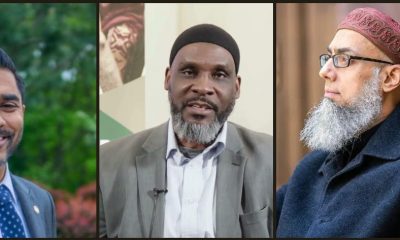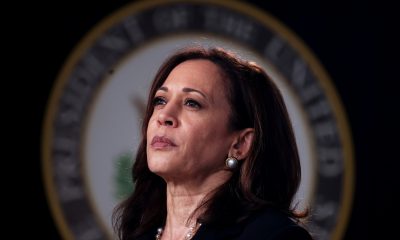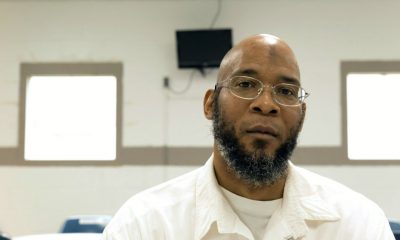#Society
Recognizing The Personal Perspectives Of Muslim Student Experiences

Published
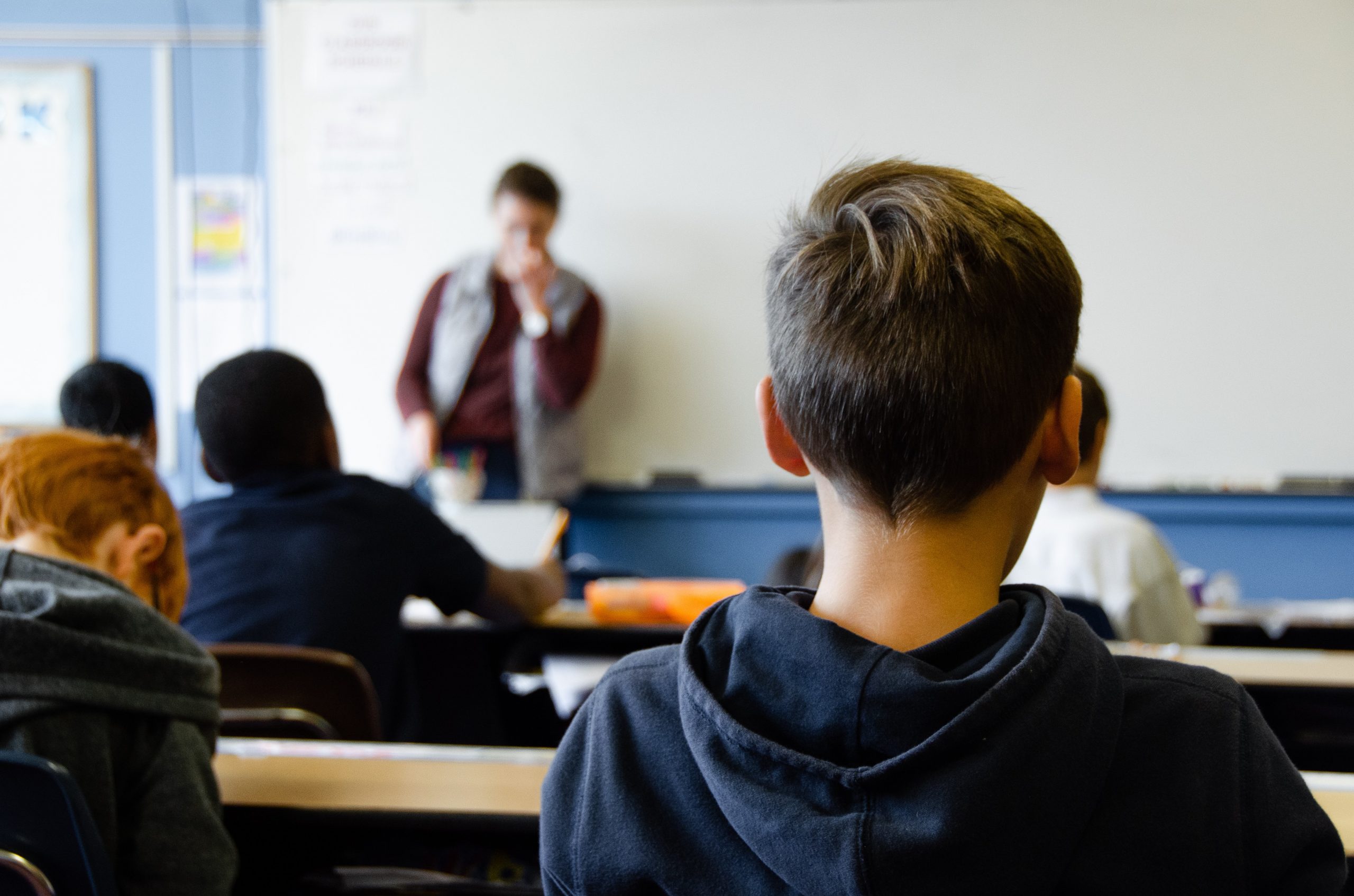
Introduction
The Muslim community within the United States is diverse, consisting of many different racial and ethnic groups in which no racial or ethnic group makes up a majority of Muslim American adults. While the Muslim community is diverse, there is a direct and pertinent relationship between race and religion as it relates to Muslims who account for both a racial minority and a religious minority within the United States. By making up both a racial and religious minority, Muslims fall under the category of a double minority in which the term is used to describe “the psychological state created when two devalued identities interact to influence the individual in a way that is greater than the sum of the independent effects of those identities” (Gonzalez et al. 2002, p. 659). As a result, Muslims are likely to experience an increase in racism and discrimination due to their identity. This increase in racism and discrimination towards Muslims is termed Islamophobia: a form of hatred, whether hostile or violent, that has targeted Muslim individuals and individuals who are mistaken to be Muslim.
Muslims in Western countries consist of youth who make up 50% of the Muslim population in which 90% of them attend public schools (Niyozov & Pluim, 2009). As a double minority, it is important to consider the ways in which Muslim students are susceptible to Islamophobia in the school setting, especially when they are seen as “different” and are “othered” by their peers. The experiences of Muslim students within educational settings can be understood by challenging the dominant narrative about Muslim students as such narratives continue to affect their experiences in education due to the consistent Islamophobic rhetoric, racial stereotyping, and discrimination that occurs.
Muslims in the United States
Keep supporting MuslimMatters for the sake of Allah
Alhamdulillah, we're at over 850 supporters. Help us get to 900 supporters this month. All it takes is a small gift from a reader like you to keep us going, for just $2 / month.
The Prophet (SAW) has taught us the best of deeds are those that done consistently, even if they are small. Click here to support MuslimMatters with a monthly donation of $2 per month. Set it and collect blessings from Allah (swt) for the khayr you're supporting without thinking about it.
As previously mentioned, Muslims consist of a diverse religious group in which no one racial or ethnic group makes up a majority of Muslim Americans. In 2017, the Pew Research Center estimated that Muslims are a diverse and growing population that make up 1.1% of the United States population in which there are 3.45 million Muslims in the United States, including 2.15 million adults and 1.35 million children. Within this number, 41% are White (including those who describe their race as Arab, Middle Eastern, or Persian), 28% are Asian, 20% are Black, 8% are Hispanic, and an additional 3% identify with another race or with multiple races (Pew Research Center, 2017). While Muslims in America are a religious minority, most individuals within the faith are a racial minority as well.
Islamophobia
As a double minority, Muslim students may be susceptible to specific forms of racism such as Islamophobia and racial stereotyping. Islamophobia can be considered a form of racism as it targets Muslims and those who are perceived to be Muslim, causing them to suffer from discrimination and animosity due to their religious identity or perceived religious identity. Green (2019) identifies Islamophobia as “the fear of and hostility toward Muslims and Islam that is rooted in racism and that results in individual and systemic discrimination, exclusion, and violence targeting Muslims and those perceived as Muslim” (p. 38). Although racism has traditionally been conceptualized as prejudice towards a specific race, the definition has come to include any discriminatory behaviors against a community due to their appearance and religious beliefs.
The intersection of religion and race leads to what Green (2019) explains as cultural racism due to the way racism incites hatred and hostility based on religious beliefs, cultural traditions, and ethnic backgrounds. As an example of cultural racism presenting itself, Muslim women who wear the hijab are easily identified as Muslim due to the head covering they wear. Additionally, other women of Color are being mistaken as Muslim and are experiencing the same type of violence. Alim (2016) mentions that “violence against Muslims (and other People of Color mistaken for Muslims, such as Sikhs and Indian women who wear headscarves) tripled” (p. 26). A few years later, a 2018 report documented three hundred hate-related incidents against South Asian, Muslim, Sikh, Hindu, Middle Eastern, and Arab communities following Donald Trump’s election (Southern Poverty Law Center, 2018). Those who experience hostility due to their outward appearance are experiencing a form of racism that manifests beyond race as it may also include religion as a factor.
In another definition, Beydoun (2018) explains Islamophobia as “the presumption that Islam is inherently violent, alien, and unassimilable, a presumption driven by the belief that expressions of Muslim identity correlate with a propensity for terrorism” (p. 28). While forms of Islamophobia have always been present, there was a clear increase after 9/11 and during Trump’s campaign for presidency (Southern Poverty Law Center, 2018) which presented itself through Islamophobic rhetoric and bullying in schools. Both of these instances led to the dominant narrative that Islam is a religion of terror, which immediately harmed Muslims and those perceived to be Muslim. In combination, these definitions defining Islamophobia can be used to better understand the dominant narrative discourses that plague the United States by harming and marginalizing Muslims.
Racialization and Religion
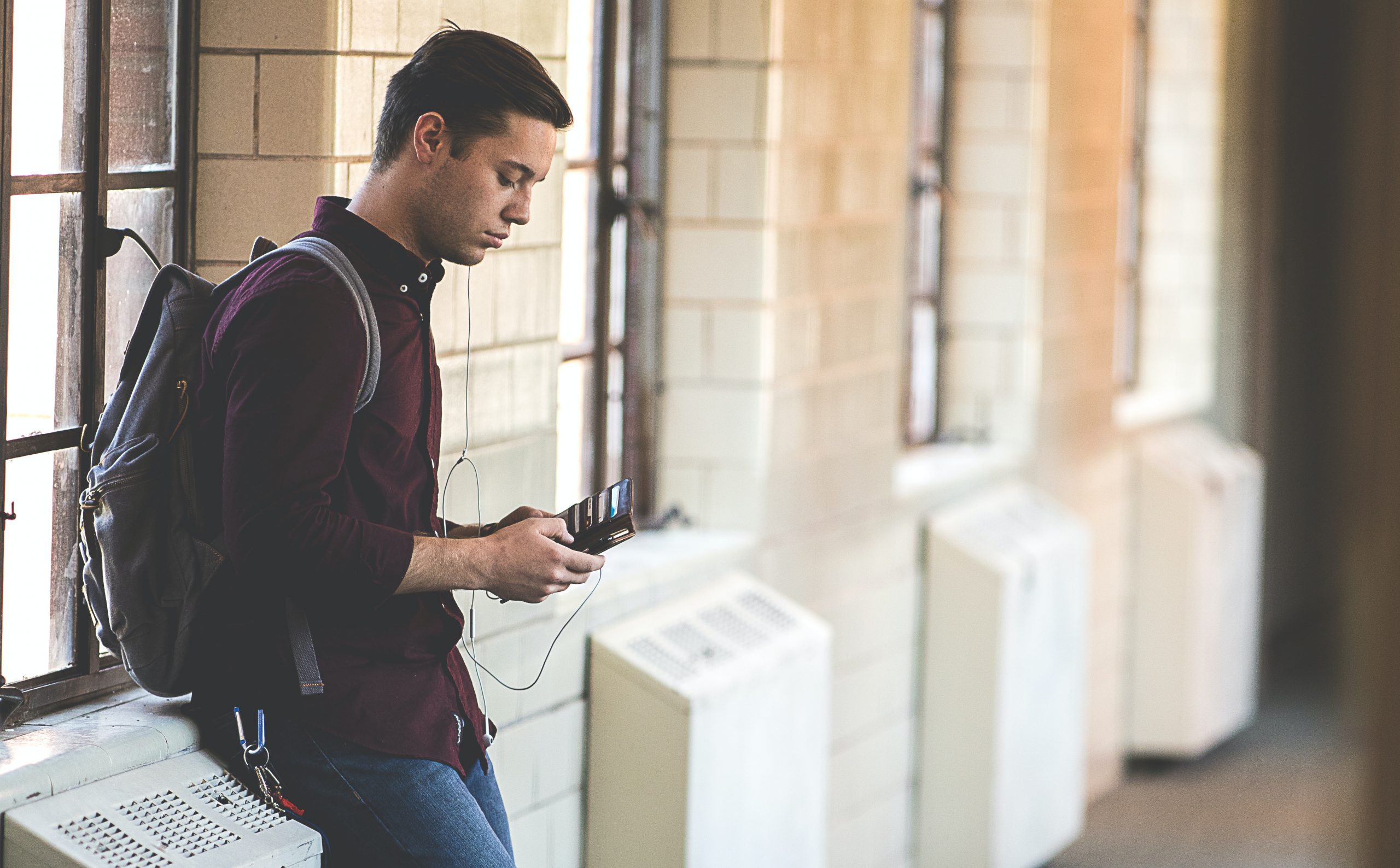
“Four-in-ten say there is something distinctive about their appearance, voice or clothing that people might associate with being Muslim. This includes most women who regularly wear hijab, but also one-in-four women who do not wear hijab regularly and about a quarter of men who also say there is something distinctively Muslim about their appearance” (Section 2, paragraph 3).
Muslims are going to experience the world in a different way as their racialization and religion makes up a minority of the American population, making them vulnerable to forms of discrimination such as Islamophobia.
To better understand how Islamophobia presents itself, it would be useful to ponder on whether race and religion impact racist ideologies the same way since Islamophobia encompasses an intersection of both. When considering this, it depends on the intersection of race and religion. For example, an Arab Christian’s race would have a larger impact than their religion. This is because being Arab makes them a racial minority, but being Christian makes them a religious majority within the United States. For an Arab Muslim, their religion may have a larger impact than their race. This is because their race and religion make them a minority within the United States, but Muslims in general have been targeted at increasing rates. At the same time, it is important to mention that an Arab Muslim who passes as the dominant race within the United States would not experience the same type of discrimination as an Arab Muslim who is easily identified by their hijab or ethnic name. Individuals who are more easily identified as Muslim may experience more racism and discrimination in school. Unfortunately, racist ideologies are difficult to unpack and solve due to the deeply ingrained prejudices they encompass.
Dominant Narrative
Dominant narratives are damaging and have a dissemination effect, especially when they are structural. Dominant narratives are harmful and include racism’s intersection with other forms of subordination. What creates the dominant narrative is the way race and racism implicitly and explicitly shape social structures, practices, and discourses and the way race creates dominance of one group over another (Yosso, 2006). Dominant narratives stem from a lack of education on Islam and assumptions based on Muslims. In respect to Islamophobia, dominant narratives are:
“Propagated by law and perpetuated by policy, policy that fluidly communicates damaging stereotypes and misrepresentations about Muslims to the broader polity, which has the effect of endorsing popular views and misconceptions, and at the extreme, emboldening hate and violence directed at Muslims and individuals incorrectly perceived as Muslims” (Beydoun, 2018, p. 28).
Islamophobia in the United States has become widespread and is funded by groups whose primary purpose is to promote prejudice against or hatred of Islam and Muslims (Saylor, 2004). According to the Council of American-Islamic Relations (CAIR), “the inner core of America’s Islamophobia network enjoyed access to at least $119,662,719 in total revenue between 2008 and 2011” (Saylor, 2004, p. 100). When this funding is worth millions of dollars and seeks to promote Islamophobia, it is not surprising that Muslims and those perceived as Muslim suffer from discrimination and animosity that is stimulated through harmful media resources. It is therefore inevitable that such views begin to present themselves within educational settings as well.
Islamophobia in the Media
The media is a strong communication force that plays a significant role in defining society’s views. When looking at the way Western media has portrayed Muslims in the past, there is clear evidence that stereotypes are the most overpowering narratives relating to the Muslim community. Whether it is through historical media or current media, mass media has contributed to further discriminating and oppressing Muslim students. Zaal (2012) explains the way “Muslims in the U.S., and Arabs specifically, have been vilified in images, cartoons, film, and television for many decades” leading to the “demonized and dehumanizing images…[that] have served to desensitize the U.S. populace and to legitimize fear and hatred against Muslims and Islam” (p. 556). These dominant narratives and discourses are then presented in schools and classrooms where students and teachers make sense of the world and reinforce such curriculum in textbooks and state standards (Zaal, 2012) by relying on mainstream media through images, texts, and narratives. Ahmad and Szpara (2003) mention how little effort has been made to present a positive image of Muslims in the media and textbooks.
Islamophobia has seen an increase in certain years and the media has had an impact on how it is presented in schools. While Islamophobia has been present in the United States for decades, there were steady increases after 9/11 and during Trump’s campaign for presidency that were perpetuated through the media and presented in schools. After 9/11, many Muslim students felt unsafe in school settings and felt the effects of heavy surveillance that could potentially lead to violence and discrimination. During and after Trump’s campaign for presidency, students felt unsafe and unwelcome both in schools and outside educational settings. Addressing what is seen in the media is an important step as it has detrimentally led to hatred presented through racism and discrimination. Beydoun (2018) mentions how this hatred is especially dominant given the heightening degree of Islamophobia coming from the media and other sources.
Islamophobia Post 9/11
After 9/11, Islamophobia increased and affected both Muslims and non-Muslims who were incorrectly perceived to be Muslim. Islamophobia led to more targeting, hatred, and surveillance where many students felt that their classrooms were not safe spaces. It is important to note that when Muslim communities are criminalized and targeted by the police state, Muslims are also subject to increasing threats of violence and discrimination (Ali, 2018) which is more likely to be experienced within schools. A concern many students began to acquire was the surveillance and policing of Muslim students, both on and off campus (Ali, 2018) that strips Muslims from having academic spaces as safe environments. While this concern had to do with students being treated as suspects on their college campuses, wariness towards Muslims became common across hundreds of schools in the United States. Due to the surveillance and policing that may happen within schools, it is understandable that Muslim students would be concerned that their perspectives would be misread. When there is mistrust like this, students are going to be affected by the misperceptions and negative stereotypes about Islam and Muslims as it affects their experiences within educational settings.
Islamophobia during the Trump Presidency
Unfortunately, racism is a type of prejudice that continues to be a component of society. During the election period in which Donald Trump was running for president, the United States saw an increase in hateful speech towards minorities and a new increase in Islamophobia. Trump’s presidential campaign led to “an alarming level of fear and anxiety among children of color” and an “inflaming [of] racial and ethnic tensions in the classroom” (Costello, 2016, p. 4). As someone who was running for president, a position of great power in the United States, Trump’s rhetoric was exceptionally harmful and left many minorities feeling vulnerable. When a presidential candidate openly spews hatred, it is not surprising that students are exposed to the same form of hatred in an educational setting.
Anti-Muslim sentiment and Islamophobic rhetoric has risen steadily since Trump’s campaign for presidency in 2016 as it began to present itself within schools. In the data collected, Costello (2016) found that more than one-third of participants had observed an increase in anti-Muslim or anti-immigrant sentiment in schools that had high concentrations of minority children. By being in a position of power and getting away with this type of behavior, Trump opened the door for others to behave in the same malicious way. Students who experienced what was happening understood that the behavior on display was not acceptable and many were confused as to how certain campaigns have been allowed to promote racism, violence, and hate (Costello, 2016). Costello (2016) mentions how “some [used] the word Trump as a taunt or as a chant as they gang up on others. Muslim children are being called terrorist or ISIS or bomber” (p. 5). Within schools, this type of behavior is often ignored or dismissed, and this type of response from schools is what contributes to Muslim students feeling a lack of trust towards teachers and school administrators.
Muslim Student Perspectives
Understanding the experiences and perspectives of marginalized individuals can raise consciousness about the injustices they face by challenging the dominant narratives that misrepresent the realities of minority communities. This approach can be used to “challenge mainstream society’s denial of the ongoing significance of race and racism” by additionally “offering a critical reflection on the lived experiences and histories of People of Color” (Yosso, 2005, p. 10). While Islamophobia is not a new form of discrimination and it has increased in recent decades, there continues to be a lack of research focusing on what Muslim students have had to endure in the United States. For example, Seward and Khan (2016) found that there is a lack of empirical studies that highlight the voices of Muslim adolescents in which their schooling experiences are shared from their personal perspectives. Hearing Muslim students speak about their experiences in school can give more insight on what it is they go through and what it is they need to ensure they are in an environment that furthers their academic achievement while also promoting a comfortable environment.
Addressing Challenges
There continue to be many challenges that need to be addressed to make sure students receive a positive educational experience. Prejudices about Muslims can harm educational opportunities as it may unconsciously limit the amount of time, attention, and feedback teachers give to their Muslim students (Sabry & Bruna, 2007). While it is hard to determine where to begin in addressing the challenges that come with racism and discrimination towards Muslim students, there is a need for a critical pedagogy approach that addresses the manifestation of Islamophobia in the classroom (Zaal, 2012), there is a need for inclusion of teachers in dialogue regarding the education of Muslim students as they play a central role in the discourse on Muslim education (Niyozov & Pluim, 2009), there is a need to deconstruct stereotypes and create anti-oppressive classrooms which allows for dialogue in a responsible way (Zaal, 2012), there is a need to increase teacher sensitivity to and awareness of the problems encountered by minority students (Ahmad & Szpara, 2003), and there is a need for understanding what Muslim students experience based on their personal perspectives. To address the challenges that affect Muslim students, we need to communicate with Muslim students to ensure their needs are accommodated for and they feel that their presence within educational settings is accounted for.
In addition, the Muslim community needs to acknowledge the experiences Muslim students encounter within schools in order to alleviate the challenges they face. As a community, we need to respond to such challenges in view of the fact that we have a responsibility to ensure Muslim students are cared for and that they receive proper education. This can be done by first advocating for Muslim students and working with educators to build a relationship that focuses on the well-being of Muslim students. When this is achieved, Muslim students are able to obtain an education that benefits them and does not harm them through the Islamophobic rhetoric, racial stereotyping, or discrimination that occurs within schools. In all, it is important to raise awareness about the experiences Muslim students are exposed to, especially when striving to create a school environment that is safe and welcoming.
Conclusion
In conclusion, due to the diversity presented within the Muslim population in the United States, acknowledging the various ways Islamophobia presents itself can be used to better understand the experiences of Muslim students within educational settings. As double minorities who often account for both a racial and religious minority, the personal perspectives of Muslim students is an essential tool when sharing their experiences. Islam is a widely misunderstood religion within the United States and many Muslims experience Islamophobia that is rooted in racism as a result. This leads to individual and systemic discrimination, exclusion, and violence targeting Muslims and those perceived as Muslim. By considering the experiences of Muslim students and those who have been targets of Islamophobic rhetoric, racial stereotyping, or discrimination within schools, educators can increase their consciousness about the injustices students face by challenging the dominant narratives that misrepresent the realities of minority communities. The lack of research regarding Muslim students should first be addressed in the classroom, a place that students deserve to consider a comfortable environment. Muslim students carry a heavy burden as they feel the need to answer for all Muslims, but by listening to the personal perspectives of Muslim students, we can better understand their experiences which will then help us better understand how we can support them within educational settings.
References
Gonzales, P. M., Blanton, H., & Williams, K. J. (2002). The Effects of Stereotype Threat and Double-minority Status on the Test Performance of Latino Women. Personality and Social Psychology Bulletin, 28(5), 659–670.
Niyozov, S., & Pluim, G. (2009). Teachers’ Perspectives on the Education of Muslim Students: A Missing Voice in Muslim Education Research. Curriculum Inquiry, 39(5), 637-677.
Pew Research Center (2017). U.S. Muslims Concerned About Their Place in Society, but Continue to Believe in the American Dream. Retrieved April 18, 2021, from https://www.pewforum.org/2017/07/26/findings-from-pew-research-centers-2017-survey-of-us-muslims/#muslims-concerned-about-extremism-both-globally-and-in-u-s
Pew Research Center (2017). U.S. Muslims Concerned About Their Place in Society, but Continue to Believe in the American Dream. Retrieved April 18, 2021, from https://www.pewforum.org/2017/07/26/findings-from-pew-research-centers-2017-survey-of-us-muslims/#muslims-concerned-about-extremism-both-globally-and-in-u-s
Green, T. (2019). The Historical Foundations of Islamophobia. In The Fear of Islam, Second Edition: An Introduction to Islamophobia in the West, 41-76.
Alim, H. S. (2016). Introducing Raciolinguistics: Racing Language and Languaging Race in Hyperracial Times. In Raciolinguistics: How Language Shapes Our Ideas about Race, 1-27.
Southern Poverty Law Center (2018). New Al Jazeera Documentary Exposes Influence of Anti-Muslim Groups in the Trump Era. Retrieved May 17, 2021, from https://www.splcenter.org/hatewatch/2018/05/23/new-al-jazeera-documentary-exposes-influence-anti-muslim-groups-trump-era
Beydoun, K. (2018). What Is Islamophobia? In American Islamophobia: Understanding the Roots and Rise of Fear, 23-44.
Southern Poverty Law Center (2018). New Al Jazeera Documentary Exposes Influence of Anti-Muslim Groups in the Trump Era. Retrieved May 17, 2021, from https://www.splcenter.org/hatewatch/2018/05/23/new-al-jazeera-documentary-exposes-influence-anti-muslim-groups-trump-era
Solórzano, D. G. (1997). Images and Words That Wound: Critical Race Theory, Racial Stereotyping, and Teacher Education. Teacher Education Quarterly, 5-19.
Pew Research Center (2017). U.S. Muslims Concerned About Their Place in Society, but Continue to Believe in the American Dream. Retrieved April 18, 2021, from https://www.pewforum.org/2017/07/26/findings-from-pew-research-centers-2017-survey-of-us-muslims/#muslims-concerned-about-extremism-both-globally-and-in-u-s
Yosso, T. J. (2006). Why Use Critical Race Theory and Counterstorytelling to Analyze the Chicana/o Educational Pipeline? In Critical Race Counterstories Along the Chicana/Chicano Educational Pipeline.
Beydoun, K. (2018). What Is Islamophobia? In American Islamophobia: Understanding the Roots and Rise of Fear, 23-44.
Saylor, C. (2014). The U.S. Islamophobia Network: Its Funding and Impact. Islamophobia Studies Journal, 2(1), 99-118.
Saylor, C. (2014). The U.S. Islamophobia Network: Its Funding and Impact. Islamophobia Studies Journal, 2(1), 99-118.
Zaal, M. (2012). Islamophobia in Classrooms, Media, and Politics. Journal of Adolescent & Adult Literacy, 55(6), 555-558.
Zaal, M. (2012). Islamophobia in Classrooms, Media, and Politics. Journal of Adolescent & Adult Literacy, 55(6), 555-558.
Ahmad, I. & Szpara, M. (2003). Muslim Children in Urban America: The New York City Schools Experience. Journal of Muslim Minority Affairs, 23, 295-301.
Beydoun, K. (2018). What Is Islamophobia? In American Islamophobia: Understanding the Roots and Rise of Fear, 23-44.
Ali, A. (2018). Learning in the Shadow of the War on Terror: Toward a Pedagogy of Muslim Indignation. In Daulatzai S. & Rana J. (Eds.), With Stones in Our Hands: Writings on Muslims, Racism, and Empire, 244-257.
Ali, A. (2018). Learning in the Shadow of the War on Terror: Toward a Pedagogy of Muslim Indignation. In Daulatzai S. & Rana J. (Eds.), With Stones in Our Hands: Writings on Muslims, Racism, and Empire, 244-257.
Costello, M. B. (2016). The Trump Effect: The Impact of the Presidential Campaign on Our Nation’s Schools. Southern Poverty Law Center, 1-16.
Costello, M. B. (2016). The Trump Effect: The Impact of the Presidential Campaign on Our Nation’s Schools. Southern Poverty Law Center, 1-16.
Costello, M. B. (2016). The Trump Effect: The Impact of the Presidential Campaign on Our Nation’s Schools. Southern Poverty Law Center, 1-16.
Costello, M. B. (2016). The Trump Effect: The Impact of the Presidential Campaign on Our Nation’s Schools. Southern Poverty Law Center, 1-16.
Yosso, T. J. (2005). Whose Culture Has Capital? A Critical Race Theory Discussion of Community Cultural Wealth. Race, Ethnicity, and Education, 8(1), 69-91.
Seward, D. X., & Khan, S. (2016). Towards an Understanding of Muslim American Adolescent High School Experiences. The International Journal for the Advancement of Counselling, 38, 1–11.
Sabry, N. S., & Bruna, K. R. (2007) Learning from the Experience of Muslim Students in American Schools: Towards a Proactive Model of School-Community Cooperation, Multicultural Perspectives, (3), 44-50.
Zaal, M. (2012). Islamophobia in Classrooms, Media, and Politics. Journal of Adolescent & Adult Literacy, 55(6), 555-558.
Niyozov, S., & Pluim, G. (2009). Teachers’ Perspectives on the Education of Muslim Students: A Missing Voice in Muslim Education Research. Curriculum Inquiry, 39(5), 637-677.
Zaal, M. (2012). Islamophobia in Classrooms, Media, and Politics. Journal of Adolescent & Adult Literacy, 55(6), 555-558.
Ahmad, I. & Szpara, M. (2003). Muslim Children in Urban America: The New York City Schools Experience. Journal of Muslim Minority Affairs, 23, 295-301.
***
Related reading:
– Islamophobia In American Public Schools
– Is PREVENT Compatible With Islam?
Keep supporting MuslimMatters for the sake of Allah
Alhamdulillah, we're at over 850 supporters. Help us get to 900 supporters this month. All it takes is a small gift from a reader like you to keep us going, for just $2 / month.
The Prophet (SAW) has taught us the best of deeds are those that done consistently, even if they are small. Click here to support MuslimMatters with a monthly donation of $2 per month. Set it and collect blessings from Allah (swt) for the khayr you're supporting without thinking about it.
Rodaina El-Haj-Ibrahim is a Palestinian-American who is currently working towards her PhD in the field of Education. She holds a Masters degree in Education, Society, and Culture and a Bachelors degree in Education Sciences. Her research focuses on the educational experiences of Muslim students and the ways Islam may influence academic success in higher education.


Israel Kills Yahya Sinwar: Hamas’ Iron Man Exits The Stage

Why Mehdi Hasan’s “Lesser Of Two Evils” Election Advice Is Wrong

[Podcast] Hospitals And Healing: Islamic Chaplaincy | Ch. Sondos Kholaki

The Role Of Kurds In The Dissemination Of Islamic Knowledge In The Malay Archipelago

Husn Al-Dhann: The Path To Islamic Optimism

The Things He Would Say – [Part 5]: Pray For Dana

Imams Call To “Abandon Harris” As American Election Looms

From the Chaplain’s Desk – Reflecting On The Final Days Of The Prophet This Rabi-ul Awwal

Thoughts On Voting As Muslims In The Upcoming US Elections I Sh. Furhan Zubairi

Israeli Assault On Lebanon Kills Hassan Nasrullah: A Look Back On The Politics That Shaped His Leadership

IOK Ramadan: The Importance of Spiritual Purification | Keys To The Divine Compass [Ep30]

IOK Ramadan: The Power of Prayer | Keys To The Divine Compass [Ep29]

IOK Ramadan: The Weight of the Qur’an | Keys To The Divine Compass [Ep28]

IOK Ramadan: Families of Faith | Keys To The Divine Compass [Ep27]

IOK Ramadan: Humility in Front of the Messenger | Keys To The Divine Compass [Ep26]
Trending
-
#Culture3 weeks ago
The Things He Would Say – [Part 5]: Pray For Dana
-
#Current Affairs1 month ago
University Chaplains’ Perspective On Campus Protests [Part V] – A Situation Of Haqq And Batil
-
#Current Affairs3 weeks ago
Imams Call To “Abandon Harris” As American Election Looms
-
#Current Affairs1 month ago
Missouri Executes Imam Khalifah Marcellus Williams Despite Likely Innocence




